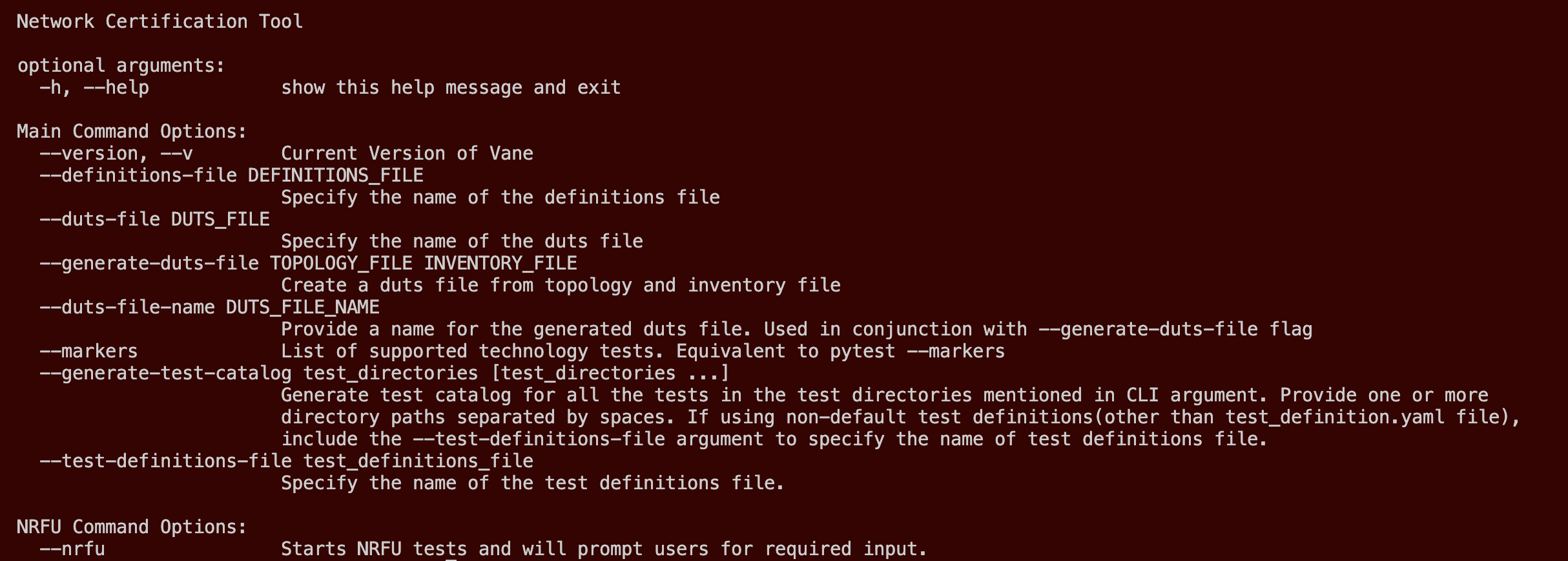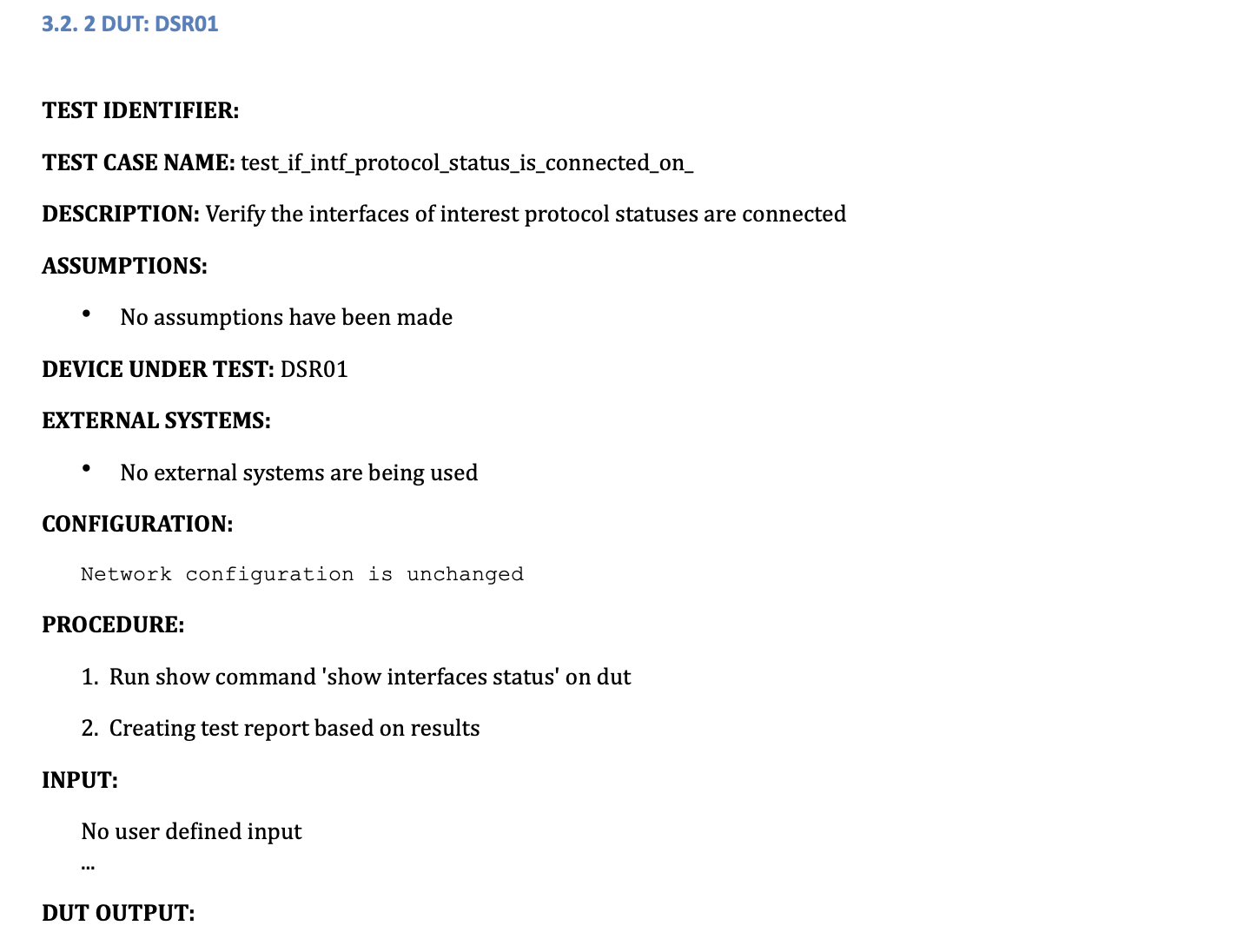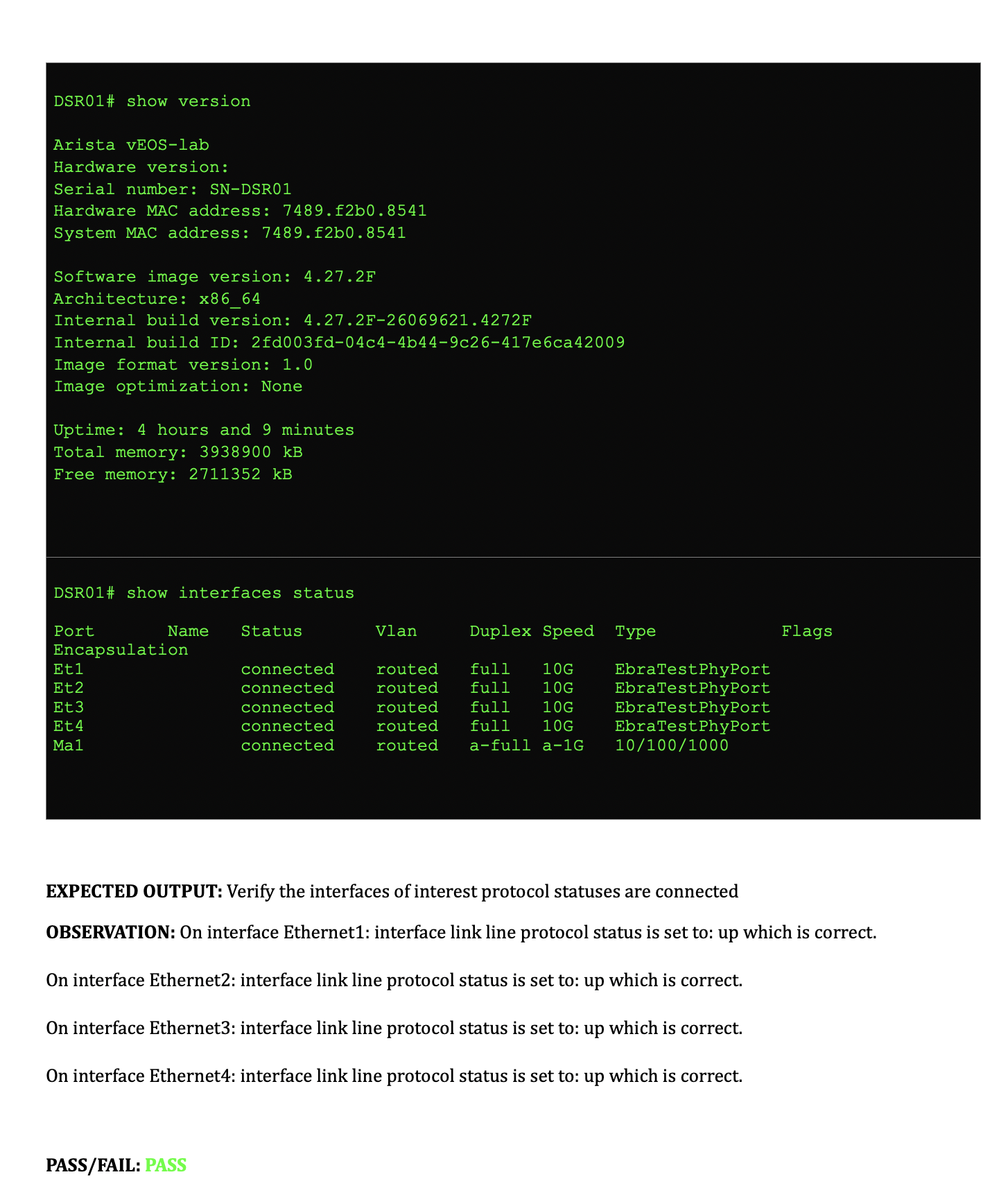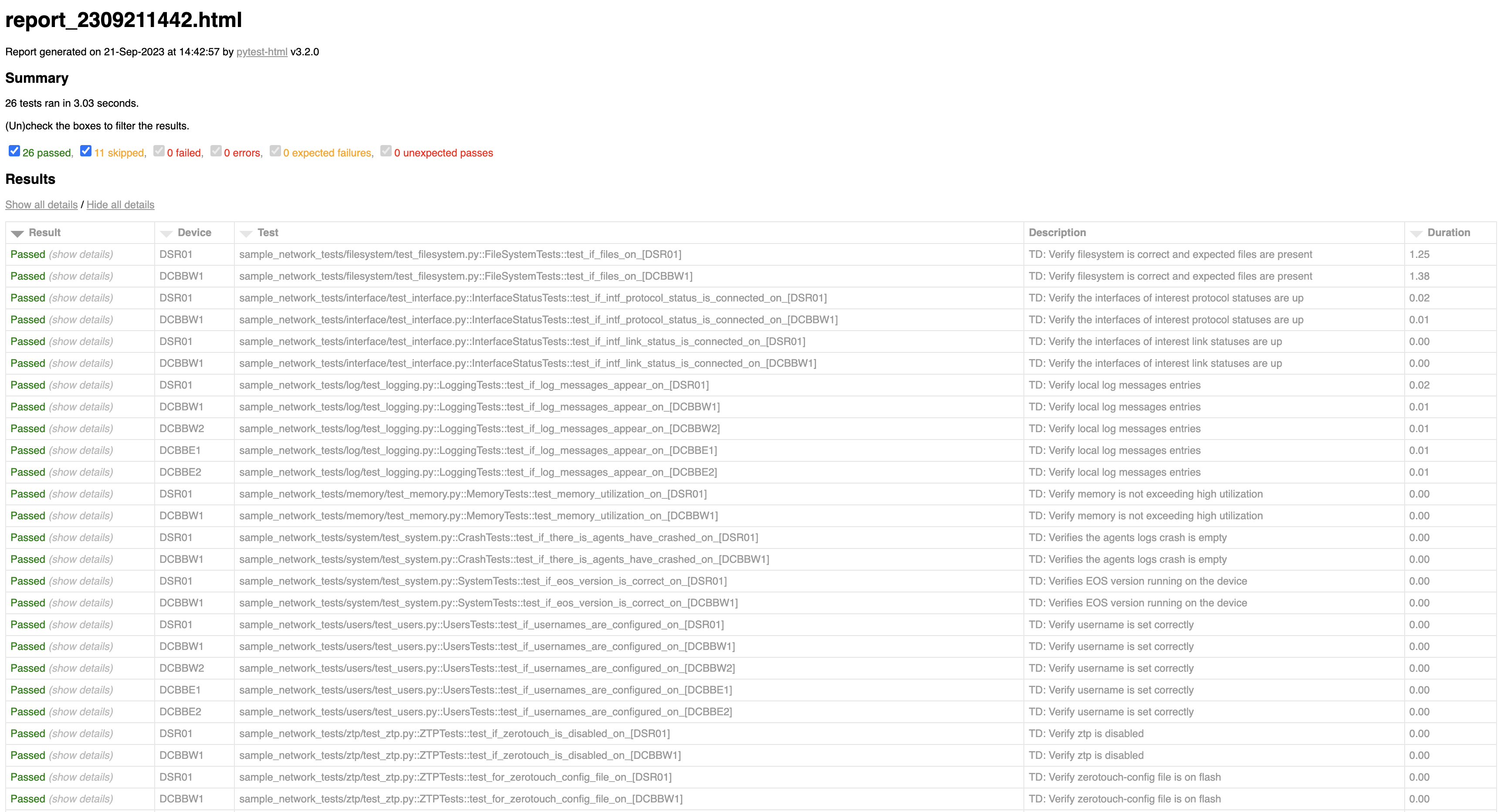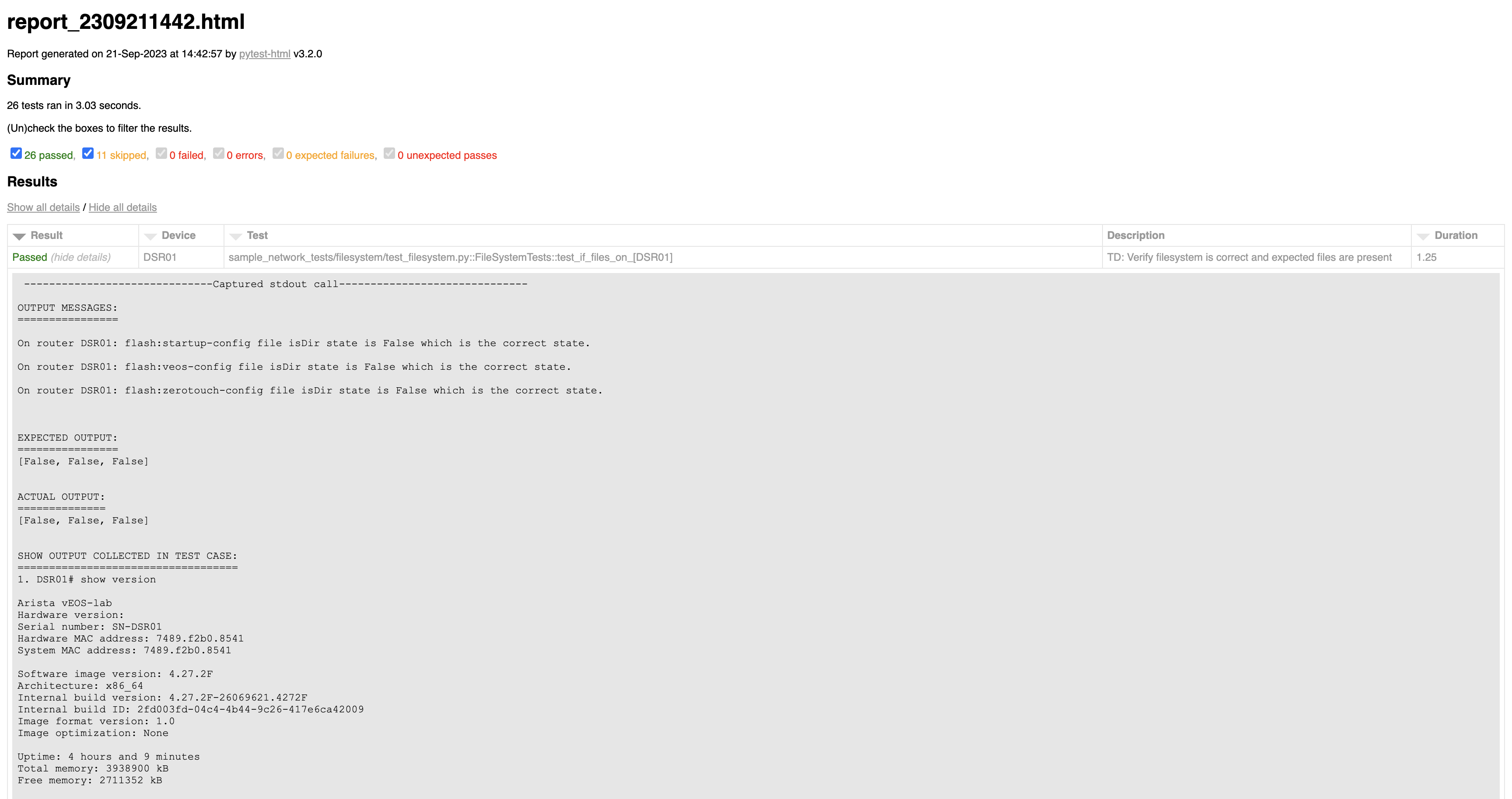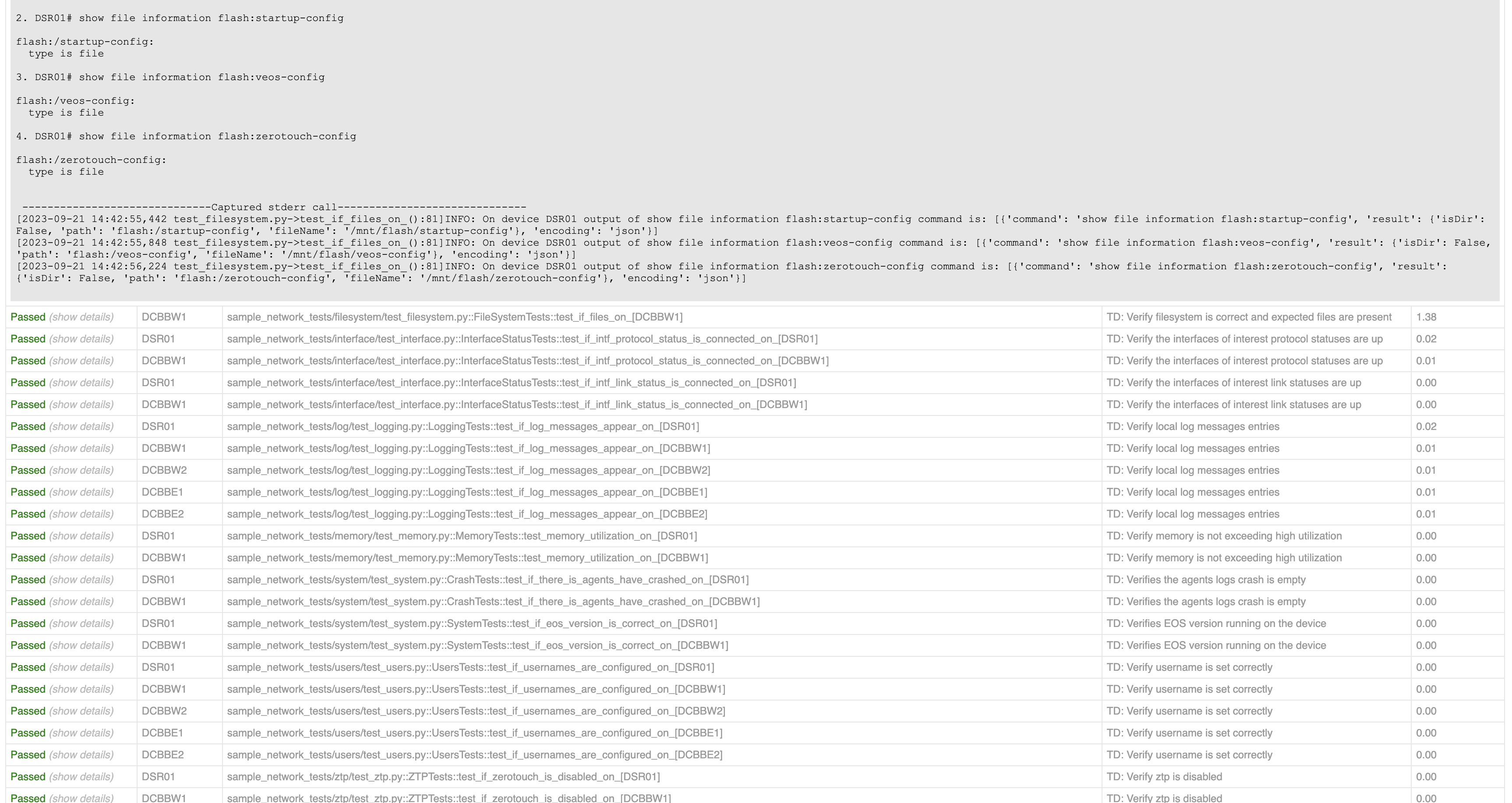Executing Vane¶
The application is run through the command line by passing in
different arguments as needed. Using the command vane --help
shows the different available arguments that can be used.
Note
Let us get started by discussing some of the necessary flags/arguments, namely definitionas and duts file, what they stand for and how they can be included in order to help you get started with Vane. The remaining arguments and api will be discussed in the API and CLI Referenec Section.
Using the definitions file flag¶
The Vane definitions file serves as an informative file to Vane, it includes different information, key fields are highlighted below:
- test_dirs: the source directory which contains the test cases to be run, in our sample definitions file we pass the sample_network_tests as the test directory. Sample Network Tests is a directory of tests provided by us which tests some basics of a network
- report_dir: the directory where report files generated by Vane should be stored,
- test_cases: list of test cases within the test_dir which need to be run,
Variables in this file can be edited by the operator to cater to the application execution.
You can provide the definitions file while running Vane as follows:
Note
definitions.yaml is the relative path to your definitions file, the sample one in vane repo is at vane/sample_network_tests/definitions.yaml
If you do not include this argument then vane defaults to using the path mentioned in the vane/config.py file
# This is a sample definitions.yaml file which can be used to run vane.
# The fields below can be changed to reflect specific test cases,
# test directories which need to be run.
parameters:
eapi_file: tests/unittests/fixtures/eapi.conf
eapi_template: tests/fixtures/templates/eapi.conf.j2
eos_conn: eapi
excel_report: null
html_report: reports/report
json_report: reports/report
mark:
processes: null
report_dir: reports
results_file: result.yml
results_dir: reports/results
setup_show: false
show_log: show_output.log
stdout: false
test_cases: All
test_dirs:
- sample_network_tests
report_test_steps: true
generate_test_definitions: false
master_definitions: master_def.yaml
template_definitions: tests_definitions.yaml
test_definitions: test_definition.yaml
verbose: true
spreadsheet: tests/fixtures/spreadsheets/PS-LLD-Questionnaire-Template.xlsx
xcel_definitions: tests/fixtures/spreadsheets/xcel_definitions.yaml
xcel_schema: tests/fixtures/spreadsheets/xcel_schema.yaml
Using the duts file flag¶
The Vane duts file includes a list of all devices that Vane should run its test cases against, it includes relevant information for each DUT (device under test) such as their hostname and their access credentials. Operators should edit this file to include the devices that they would like to run Vane against.
Note
In the CLI section later on we talk about how we can use certain flag to generate this duts.yaml file instead of having to manually fill in all the details
You can provide the duts file while running Vane as follows:
Note
duts.yaml is the relative path to your duts file, you can use the sample one in vane repo located at vane/sample_network_tests/duts.yaml to get started.
If you do not include this argument then vane defaults to using the path mentioned in the vane/config.py file
# This is a sample duts.yaml file which can be used to run vane.
# Ensure you edit the ip addresses to reflect your DUTS
duts:
- mgmt_ip: 10.255.106.71
name: DSR01
neighbors:
- neighborDevice: DCBBW1
neighborPort: Ethernet1
port: Ethernet1
- neighborDevice: DCBBW2
neighborPort: Ethernet1
port: Ethernet2
- neighborDevice: DCBBE1
neighborPort: Ethernet1
port: Ethernet3
- neighborDevice: DCBBE2
neighborPort: Ethernet1
port: Ethernet4
password: cvp123!
transport: https
username: cvpadmin
role: unknown
- mgmt_ip: 10.255.70.133
name: DCBBW1
neighbors:
- neighborDevice: DSR01
neighborPort: Ethernet1
port: Ethernet1
password: cvp123!
transport: https
username: cvpadmin
role: unknown
There are a few other flags with descriptions on how to use them which you can explore further in the CLI section, but the ones described above are the necessary ones to get started.
Running Vane¶
Command to Run Vane:
Note
Ensure the DEFINITIONS_FILE and DUTS_FILE variables in config.py are pointing to the correct location for the respective files if you want to run vane using “vane” command, if not you might have to explicitly mention the arguments and give the locations in the command as follows:
vane –definitions-file sample_network_tests/definitions.yaml –duts-file sample_network_tests/duts.yaml
Below is a sample run of vane:
Success
If the test cases get executed correctly, it implies vane has been set up correctly, the failure of test cases in itself does not imply an error on vane’s execution side of things.
Viewing Reports generated by Vane¶
After Vane has executed successfully, test case reports get generated and populated in the reports folder which exist in the outermost directory of vane. You can view these reports in multiple formats, including json, .docx, html. These reports offer detailed information on the test cases such as test case procedure, input, expected output, pass/fail result, and other relevant observations.
Vane Logs
You can also gather more insights into your test execution by accessing the logs folder located in the root of your project directory. This folder would have a vane.log file with overall logs and additionally also have individual test case logs.
Warning
The logs folder gets cleaned at the beginning of each vane run to delete test case logs (plus any additional files you may have created in it) and only maintains the vane.log file.
